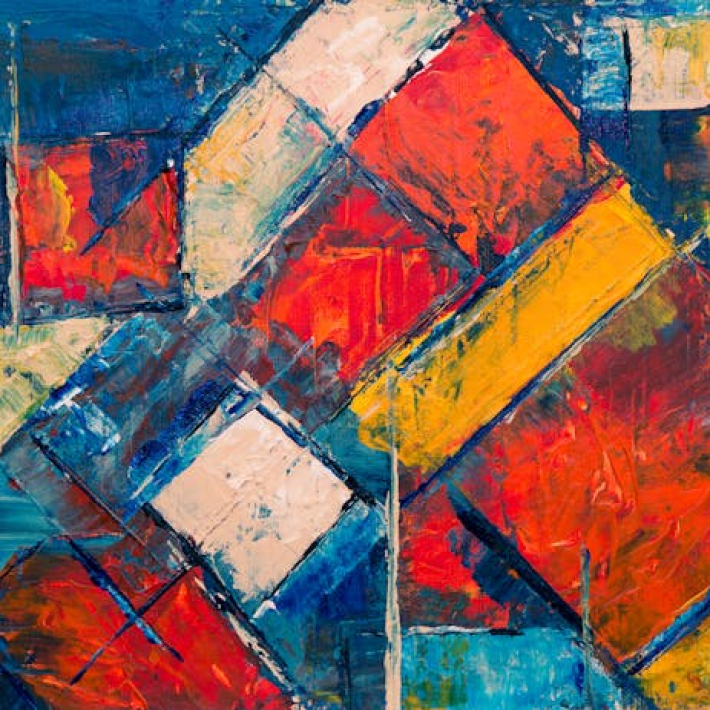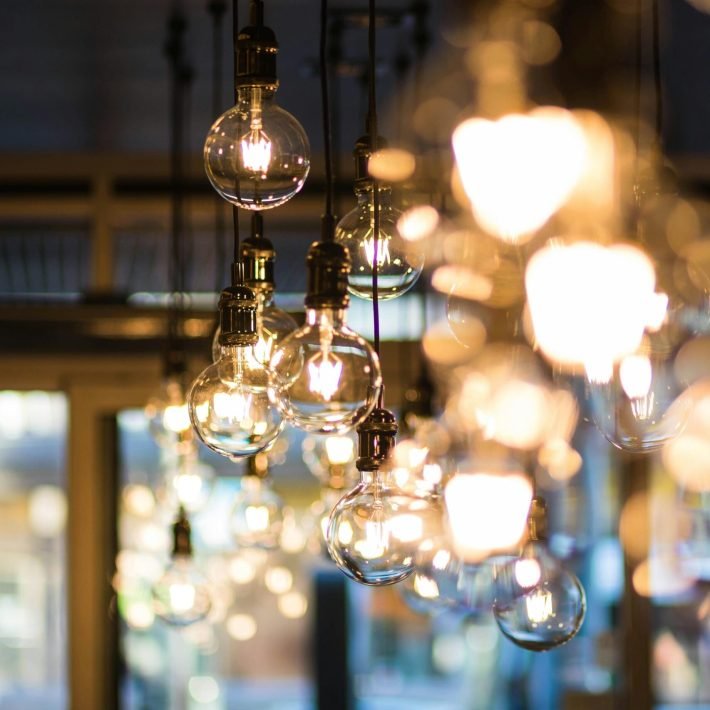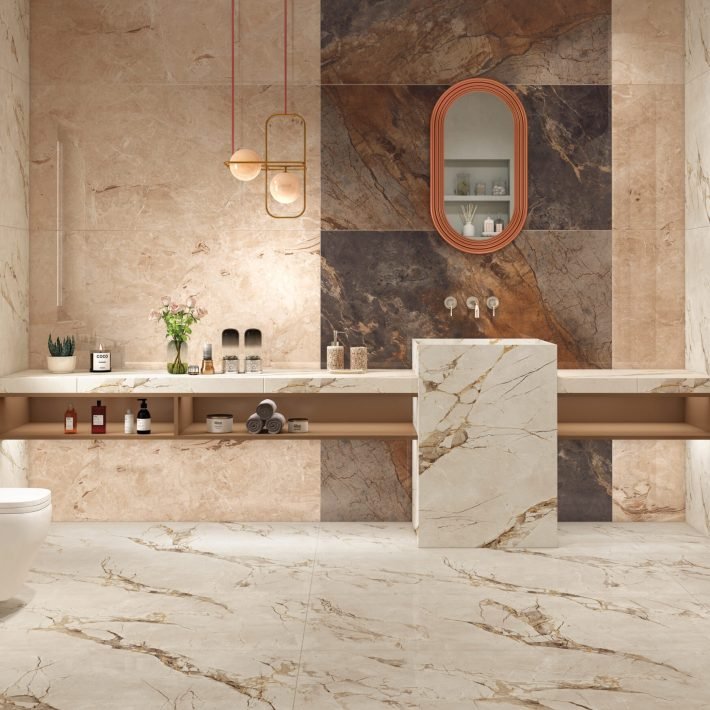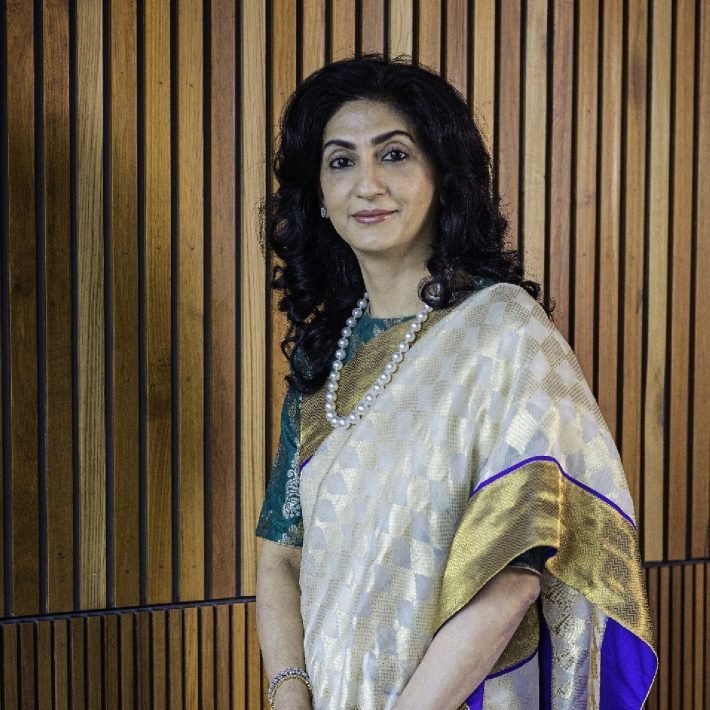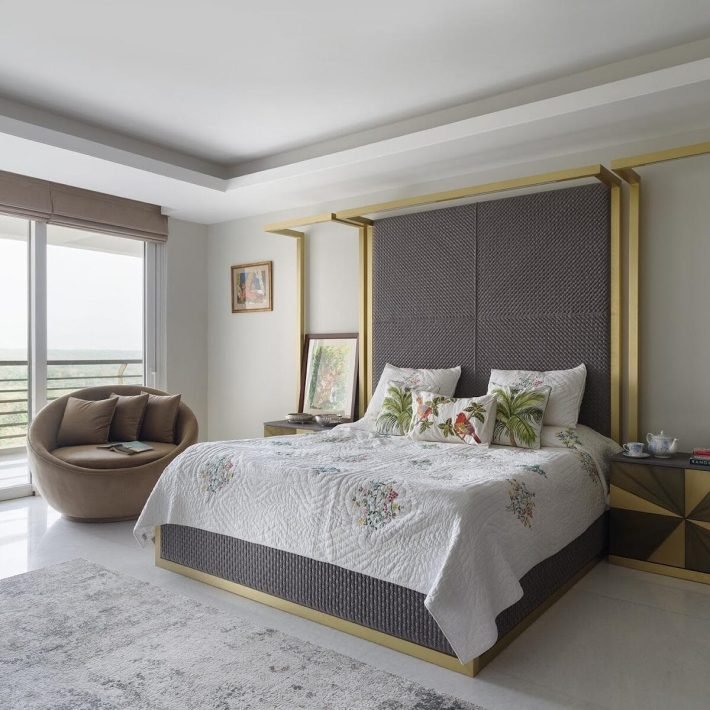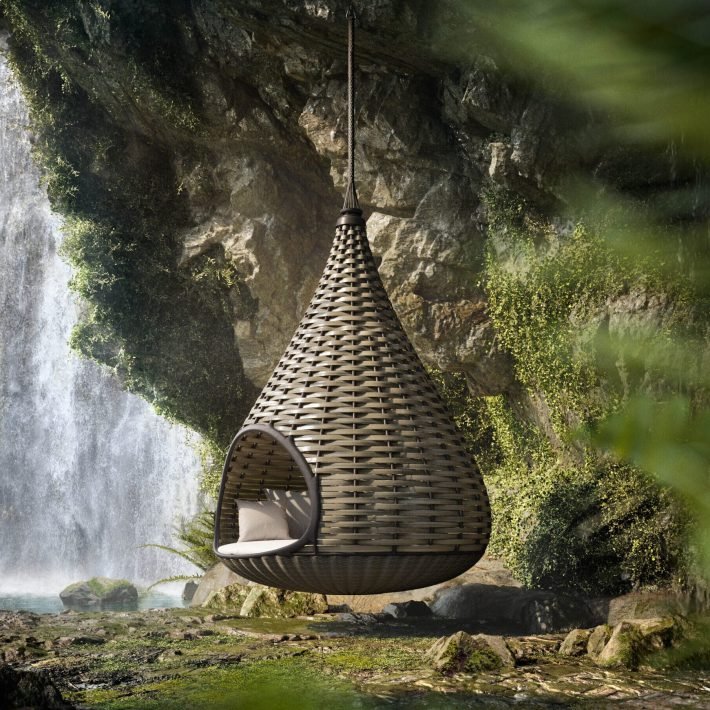Society Interiors and Design explored the perspectives of architects and interior designers on crafting a mandir that blends gracefully into modern home settings while preserving its spiritual importance. Their insights shed light on how these sanctuaries can enrich both the practicality and atmosphere of contemporary living spaces.
In the ever-evolving landscape of interior design, there’s a growing trend toward blending traditional elements with modern aesthetics. One such fusion that holds profound cultural significance is the integration of mandir designs into contemporary living spaces. Mandir is not just a place of worship but also an embodiment of spiritual sanctity and cultural heritage. Incorporating them into modern interiors requires a thoughtful approach that respects tradition while embracing innovation and understanding the end user’s requirements.
At the heart of this integration lies the delicate balance between preserving the essence of traditional mandir designs and adapting them to fit modern lifestyles. Traditional mandirs are characterized by intricate carvings, vibrant colors, and symbolic motifs, reflecting centuries-old craftsmanship and religious symbolism. In contrast, modern interior concepts emphasize clean lines, minimalism, and functionality. However, by selectively incorporating key elements of mandir design into modern spaces, designers can create harmonious environments that resonate with both heritage and contemporary styles.
Society interiors and Design interviewed several architects and interior designers to gather their perspectives on designing a mandir that seamlessly integrates with overall decor without overpowering it, yet maintains its own distinct identity.
Priyanka Khanna and Rudraksh Charan, Founder and Architects-42mm Architecture
Designing a temple space or Mandir room involves creating a sacred and serene environment that fosters devotion and tranquillity. Starting with white walls, which serve as the best canvas, allows for a pure and peaceful backdrop. White walls reflect light, making the room feel open and airy, and they provide a neutral background that highlights other decorative elements and the deities themselves.

Intricate wall paneling and a false ceiling can be added for depth and elegance. Wall paneling with traditional motifs of lotus flowers, peacocks, or geometric patterns gives the space an artistic look and feel. A false ceiling with detailed carvings or jaali work can include ambient lighting, adding to the spiritual ambiance and drawing the eye upward, making one aspire to connect with the divine.
A stage for the deities is essential, serving as the focal point of the Mandir room. This stage should be elevated and adorned with rich materials like marble or wood, featuring intricate detailing that reflects the sacred nature of the space. Furthermore, a stool for the worshipper is a thoughtful addition, offering a comfortable place to sit during extended periods of prayer or meditation. It should be simple yet elegant, complementing the overall design of the room.
Additional hanging shelves can be used to display religious artifacts, scriptures, and offerings. These shelves not only provide practical storage but also contribute to the room’s aesthetic by showcasing items of spiritual significance. Placing them strategically around the room ensures that essential items are within reach while maintaining an organized and uncluttered space.
Rope lighting can be used to softly illuminate the space, thereby creating a warm and inviting ambiance. Placed around the stage, along the false ceiling, or at the back of the wall paneling, rope lighting outlines every little detail and gives the place a divine light, which amplifies the experience.
Ajay Arya, Founder and Interior Designer- A Square Designs
Designing a temple space or Mandir room with traditional elements ensures the creation of a sacred and aesthetically pleasing environment. Start with large, heavy traditional Mandir doors painted in white. These doors not only symbolise purity but also provide a grand and welcoming entrance to the holy space. Their substantial presence adds to the sanctity and solemnity of the room, marking a clear transition from the mundane to the spiritual.
Marble flooring is an ideal choice for the Mandir room. Marble’s smooth, reflective surface exudes elegance and purity, which is fitting for a sacred space. Its durability and timeless appeal make it a practical and beautiful foundation, easy to clean and maintain, ensuring the room always looks pristine and inviting.

The Mandir itself should be designed with traditional elements and royal touches, featuring intricate designs and gold detailing on the walls. Gold accents symbolize divinity and prosperity, enhancing the spiritual ambiance and reflecting the rich cultural heritage. These details can be incorporated into carvings, inlays, and decorative borders, creating a visually stunning and reverent atmosphere.
A ceremonial umbrella, suspended from the roof above the deities, is a majestic and auspicious sight in the Mandir room. The chhatra, traditionally considered to multiply wealth and prosperity, does not just play a symbolic role; it also vertically stretches the design, lifting the eye upward to provide a feeling of height and grandeur. The presence of this element underlines the reverence and honour accorded to the deities, making the space even more hallowed.
The grand entrance, luxury marble flooring, royal designs with gold detailing, and the inclusion of an auspicious chhatra, together make this Mandir beautiful, yet spiritually uplifting. This thoughtfully designed space works to be a quiet sanctuary for praying, meditation, and celebrating tradition and faith.
Ar. Ninada Kashyap and Ar. Komal Mittal Co-Founder, Alkove-Design

Each of our Mandir designs is inspired by classical elements that embrace contemporary designs resulting in unique spaces. Each prayer space is designed to focus on creating an intimate and sacred environment. Drawing inspiration from the temple shikhara, one of our mandir designs incorporates a pyramidal false ceiling that adds a touch of divinity. This intimate prayer space connects seamlessly to the living area through an ornate, translucent glass opening, allowing natural light to filter through. The cove lighting along the walls casts a soft glow, adding a touch of divinity to the shrine. Another design features a prayer space carved into an alcove, adorned with seven chakras of the human body crafted in metal and mounted on the doorway. These embellishments metaphorically elevate the divine space, inviting sacred energies to flow within. This design beautifully merges traditional spiritual symbolism with a modern, minimalist approach, ensuring both aesthetic appeal and spiritual functionality. In of the design the worship space is bathed in a luminous glow, bound by fluted wooden paneling in a tone that runs uniformly along the corridor. This wooden backdrop forms a cohesive aesthetic that is both warm and inviting. At the heart of the space lies a brass-embellished marble altar. Niches within the paneling hold sacred idols and religious artefacts, making each element visually appealing while also imbued with spiritual significance. We carefully select materials such as wood, marble, brass, and glass to evoke a sense of timelessness and reverence. These materials contribute to the spiritual ambiance and ensure a connection to tradition. Lighting plays a crucial role in enhancing the sacred ambiance. We utilize cove lighting, to cast a glow on walls and ambient lighting with carefully placed fixtures to ensure the space is illuminated without being harsh, maintaining a peaceful environment
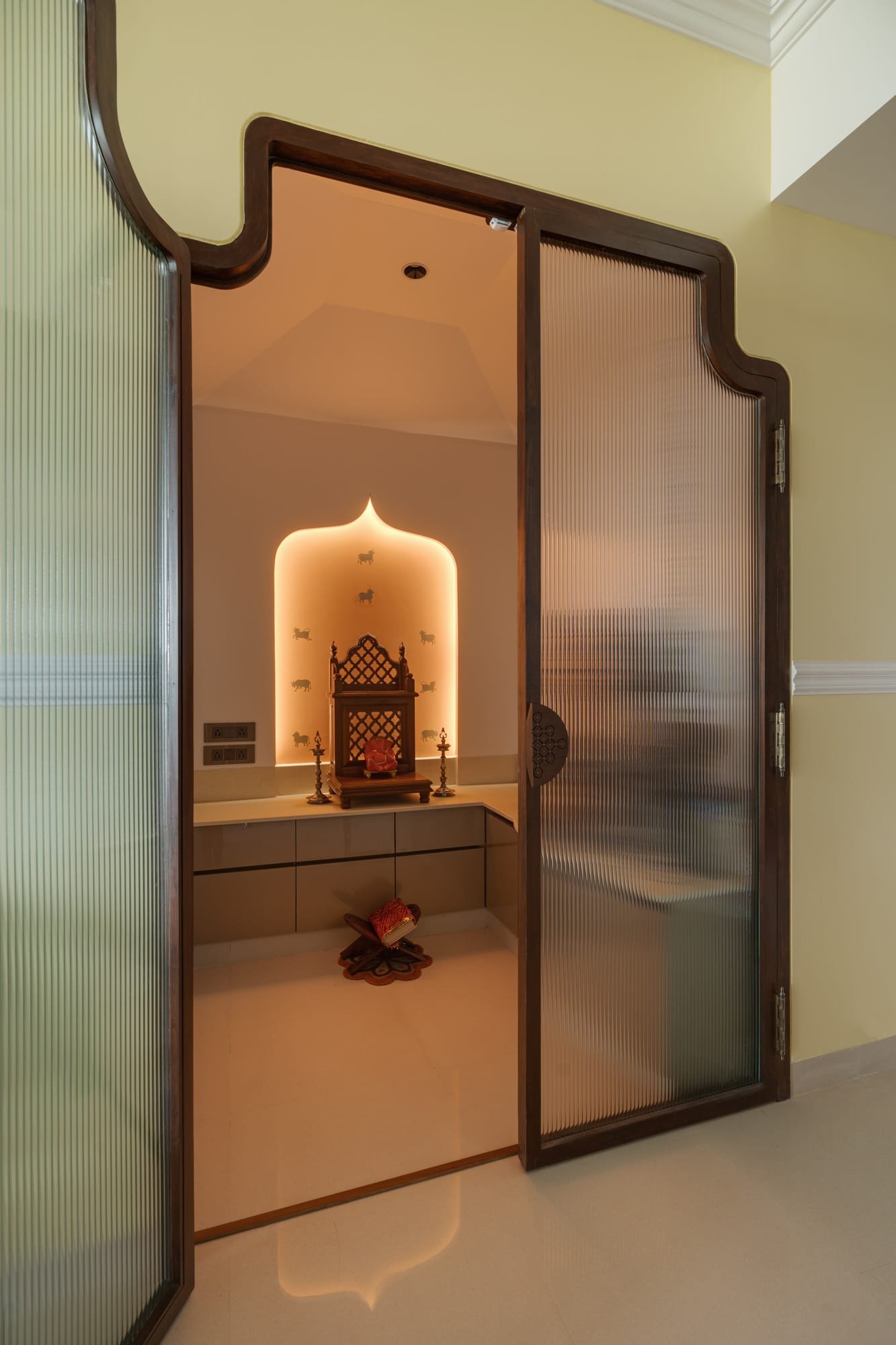

Aparna Kaushik , Founder and Architect , Aparna Kaushik Design Group

A temple room, adorned with white neutral walls, embodies a serene and sacred ambiance, offering a tranquil retreat for spiritual practice. The walls, adorned with pristine white granite, tiles, or other precious stones, exude an aura of purity and tranquillity, making the space feel both luxurious and peaceful. The back wall of the mandir stands out, featuring either traditional tiles or a textured finish, adding a subtle yet distinct touch of tradition and elegance that pays homage to timeless artistry. At the heart of this sacred space, an elevated platform gracefully holds the deity, signifying reverence and devotion. This elevated platform not only elevates the divine but also serves as a focal point for worshippers, guiding their prayers and meditations.

The serene environment is complemented by thoughtful lighting, creating a divine glow that enhances the spiritual experience and highlights the intricate details of the room. Soft, warm lights can be strategically placed to cast a gentle radiance, making the space feel inviting and holy. The space is further enriched with a traditional ghanti or bell, whose gentle chimes evoke a sense of peace and sanctity, marking moments of prayer and connection with the divine. A chandelier, with its soft illumination, adds a touch of grandeur, completing the temple room’s harmonious and sacred atmosphere, and making it a perfect blend of simplicity and elegance.

Rashi Bothra and Ruchi Gehani, Founders and Interior Designers of Azure Interiors
Incorporating a temple or Mandir room in a home fosters spiritual well-being, providing a dedicated space for prayer, meditation, and rituals. It strengthens cultural and religious connections, offering a serene sanctuary for personal reflection and communal worship. One essential aspect is choosing neutral walls, which provide a calming backdrop and allow the intricate details of the room to stand out without overwhelming the senses. Neutral tones, such as soft whites, beiges, or light greys, create an atmosphere of peace and purity, enhancing the spiritual ambiance.
Incorporating traditional tiles with gold elements adds a touch of opulence and sacredness to the space. These tiles, with their rich cultural motifs and shimmering gold accents, can be used to adorn the flooring or create an elegant border around the room.
A marble singhasan, or throne, is a central feature in a Mandir room. An elegantly detailed singhasan with carved floral patterns, deities, or traditional symbols adds a majestic and reverent touch. Marble, with its serene and timeless appeal, serves as the perfect material for this purpose, symbolising purity and strength. The singhasan should be placed in such a way that it becomes the focal point of the room, drawing the attention and reverence of devotees while praying and performing rituals.
For the backsplash behind the deity, using a traditional artistic chadar can significantly enhance the visual and spiritual appeal. These chadars, often woven by hand in intricate designs and vibrant colours, not only protect the wall but also add a layer of cultural richness. The patterns and motifs on the chadar often depict stories from the scriptures, bringing an additional layer of meaning and devotion to the space.
Together, these elements create a Mandir room that is both aesthetically pleasing and spiritually uplifting, reflecting timeless traditions of Hinduism while providing a serene environment for devotion and meditation.
Rajat Behl and Shrruti Behall, Founders NSN Studio Divine | Story Input for Mandir Design
The inspiration behind the Mandir at this home in DLF Camellias in Gurugram is to create a Mandir that embodies both tradition and modernity, reflecting a soulful space within a contemporary setting. Here aim was to merge the essence of spiritual practices with innovative design elements, crafting a serene and sophisticated environment.
The Mandir, nestled within the expansive 7,196 sq ft apartment of Malika and Mohit Sadani, is a testament to the meticulous attention to detail and the use of high-quality materials. Drawing on the rich heritage of traditional Indian architecture and incorporating Art Deco influences, it establishes a harmonious blend of the old and the new. The Sadani family’s vision of a luxurious yet functional space is brought to life through the use of high-quality materials, ensuring longevity and low maintenance. The foundation of the mandir is rooted in traditional aesthetics, symbolised through the use of iconic sunburst motifs—a quintessential feature of Art Deco that symbolises energy and radiance. These motifs, crafted in a palette of wooden brown, white, and gold, create a backdrop that is both visually stunning and spiritually evocative.
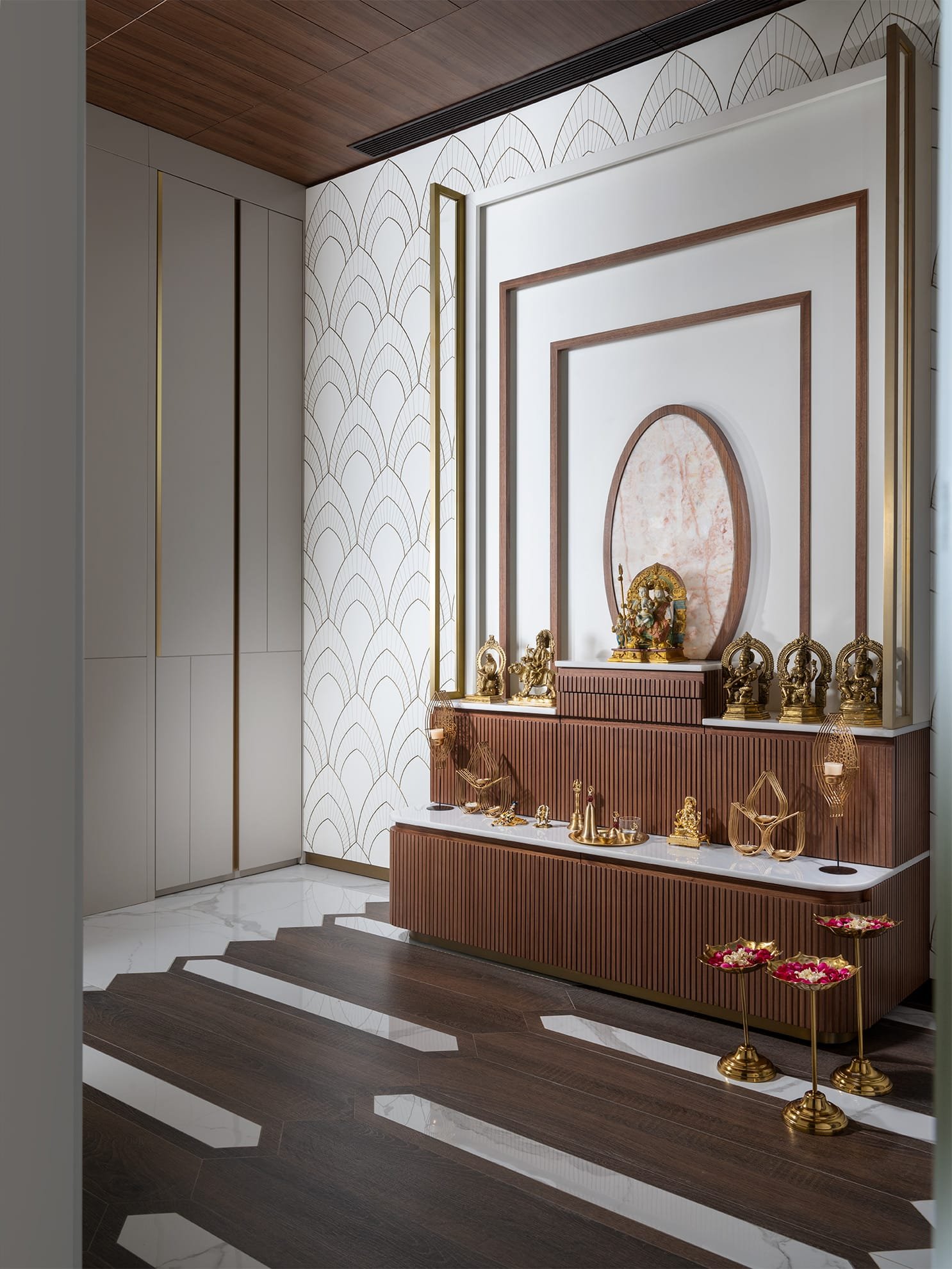
The flooring of the mandir further accentuates its traditional essence, featuring a wooden pattern with brass inlay. This choice of material not only adds an elegant touch but also resonates with the historical significance of brass in Indian culture, often associated with purity and auspiciousness. Innovative design solutions are integrated into the mandir, enhancing its functionality and aesthetic appeal. The use of sleek, reflective surfaces and bold geometric patterns are nods to the Art Deco style, bringing a sense of sophistication to the sacred space. Modernity is also reflected in the minimalist approach to decor, ensuring that the focus remains on the spiritual experience rather than on excessive ornamentation.
The lighting in the mandir is a key element that blends tradition with modernity. Strategically placed lights not only highlight the intricate details of the design but also create a warm and inviting atmosphere. Contemporary lighting techniques ensure that the mandir is well-lit without overwhelming the space, maintaining a balance between illumination and tranquillity. This fusion of the old and the new not only honours the cultural heritage but also reflects the dynamic, forward-thinking spirit of the homeowners, making the mandir a true sanctuary of peace and elegance.



